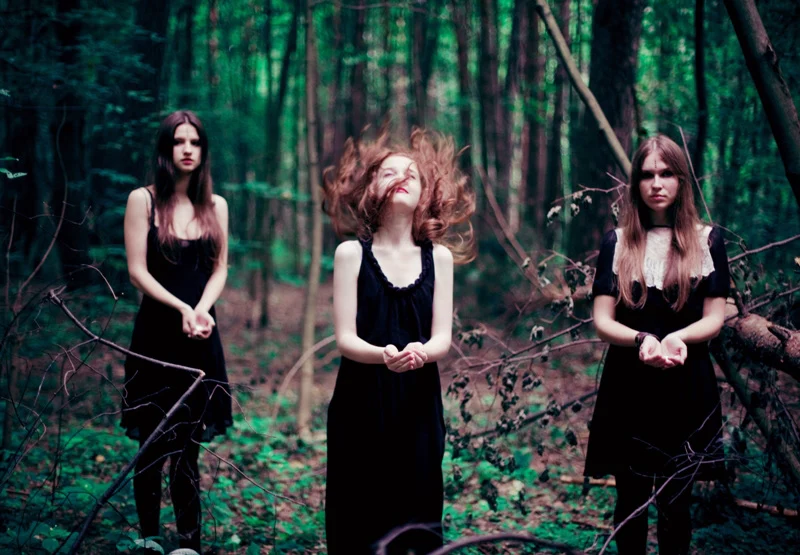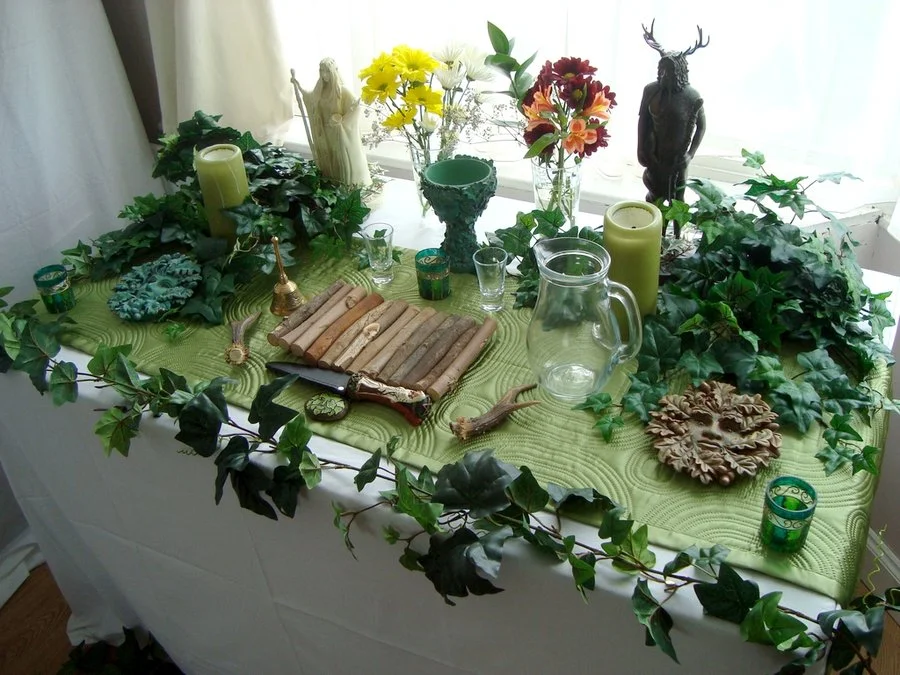Gardnerian Wicca, one of the earliest traditions within the modern Wiccan movement, is a practice shrouded in mystique and rich with ritual. Founded by Gerald Gardner in the mid-20th century, this branch of Wicca is both secretive and highly structured, emphasizing direct lineage to Gardner himself. For those curious or being drawn to the Gardnerian path, understanding how to become initiated, the spellwork involved, and the tools employed is crucial to walking the Gardnerian Wiccan way.
Key Takeaways
- Gardnerian Wicca is a specific tradition within Wicca founded by Gerald Gardner.
- Initiation and lineage are key aspects of becoming a Gardnerian Wiccan.
- Spellwork in Gardnerian Wicca follows structured rituals and often involves working within a coven.
- Tools such as the athame, wand, chalice, and pentacle are central to Gardnerian practice.
- The Book of Shadows is a critical text containing rituals, spells, and teachings specific to Gardnerian Wicca.
Journey to Becoming a Gardnerian Wiccan
Embarking on the path to becoming a Gardnerian Wiccan is not a solitary endeavor. One is required to be initiated into a coven that can trace its lineage back to Gerald Gardner. This emphasizes the importance of authenticity and tradition within the practice. For those seeking initiation, finding a legitimate Gardnerian coven and establishing a connection with its members is the first step.
Prospective practitioners often spend time learning about the tradition, usually through books and meetings with current Gardnerian Wiccans, bearing in mind that much of the tradition is oath-bound and only revealed to initiates. A period of training often follows, where seekers learn the basic beliefs and practices of Wicca under the guidance of a High Priestess or High Priest. Only after demonstrating dedication and understanding can one be considered for initiation.


The Craft of Spells in Gardnerian Wicca
Spellwork in Gardnerian Wicca is rooted in ritual, and it typically takes place within a cast circle, a sacred space created through specific rituals. The circle not only serves as protection but also as a container for the raised energy. Gardnerian spells may be cast for various purposes, from healing to protection to personal growth, always adhering to the Wiccan Rede’s guidance to harm none.
Spells are often worked during Esbats (full or new moon gatherings) or Sabbats (seasonal festivals) when the coven meets to celebrate and perform magic. A unique aspect of Gardnerian spellwork is that it is usually performed in a group setting, with the combined energy and focus of the coven members amplifying the spell’s power.
Ritual Implements of Gardnerian Wicca
Gerald Gardner introduced an array of ritual tools that have since become an iconic part of Wiccan practice. Among them, the athame (a double-edged ceremonial dagger) stands out as a tool to direct energy and cast circles. The wand, often crafted from wood associated with specific magical properties, serves a similar purpose but in a gentler manner.
The chalice or cup symbolizes the feminine divine and is used to hold wine or water during ceremonies, which represents the element of Water. The pentacle, a metal or wooden disc engraved with a pentagram, represents Earth and is employed to consecrate other tools or as a focal point for meditation and spells.
Incense, candles, and a Bowl of Water are also used, representing the elements of Air, Fire, and Water, respectively. The censer, used to burn incense, and the bolline, a practical working knife, are also present in many Gardnerian rituals.
Building Your Gardnerian Practice
As with many spiritual paths, Gardnerian Wicca is rich with tradition, and its practices are meant to unfold over time. For more detailed information, including spells and rituals specific to the Gardnerian tradition, seekers can explore foundational texts such as “Witchcraft Today” and “The Meaning of Witchcraft” by Gerald Gardner. However, the most profound experiences and teachings are typically shared within the confines of the coven group after initiation.
The progression through the degrees of initiation deepens one’s understanding and experience, bringing with it a greater role in the practice and teaching of Gardnerian Wicca. As one advances, access to the coven’s Book of Shadows, containing the accumulated wisdom and specific rituals of the tradition, is granted. Each coven’s book is uniquely adapted by its High Priestess or High Priest, adding to the living tradition’s tapestry.
It is worth noting that while beginners can acquaint themselves with the basic principles of Wicca, formal training and initiation are required before embracing the role of a Gardnerian Witch fully. The Gardnerian tradition is protective of its mysteries, and rightfully so—its power lies in the consistency and integrity of its practices handed down through generations of practitioners.


Gardnerian Wicca Books
There are several wiccan books that provide insights into Gardnerian Wicca, its history, practices, and philosophy. Here are some key texts that you might find informative:
- “Witchcraft Today” by Gerald Gardner: This is one of Gardner’s seminal works, where he introduces the concept of modern witchcraft and discusses some of the practices of his coven.
- “The Meaning of Witchcraft” by Gerald Gardner: Another important work by Gardner, this book delves deeper into the philosophy and beliefs of Gardnerian Wicca.
- “The Gardnerian Book of Shadows” (Authorship varies): The Book of Shadows is a central text in Gardnerian Wicca, containing rituals, spells, and magical practices. Different covens may have their versions of the Book of Shadows, and there are published versions that offer insights into its contents.
- “Wicca: A Guide for the Solitary Practitioner” by Scott Cunningham: While not specifically Gardnerian, this book is a classic in the realm of solitary Wiccan practice and provides a good general introduction to Wicca.
- “Wicca: A Year and a Day” by Timothy Roderick: This book is designed as a comprehensive guide to Wicca, covering topics relevant to both solitary practitioners and those interested in joining a coven. It provides a structured approach to learning and practicing Wicca over a year and a day.
- “High Magics Aid” by Gerald Gardner (writing as Scire): This is a fictional work by Gardner but is considered by some to contain elements of his Wiccan beliefs. It was one of the first novels to openly discuss witchcraft.
Facts about Gardnerian Wicca
One of the distinctive features of Gardnerian Wicca is its initiatory structure. Prospective members undergo a formal initiation process conducted by existing members of the tradition. This ritualistic entry into the coven establishes a connection between the practitioner and the tradition’s teachings.
What is the difference between Gardnerian Wicca and other forms of Wicca?
Gardnerian Wicca is one of the earliest and most structured traditions, requiring initiation and direct lineage to its founder. Other forms of Wicca might be more eclectic or individualistic, and not all require initiation or adhere to a strict lineage.
Can I practice Gardnerian Wicca on my own?
Gardnerian Wicca is traditionally practiced within a coven, and solo practice is not typical. Certain aspects of the practice, including initiation, can only be performed in a coven setting.
What are some common Gardnerian rituals?
Common Gardnerian rituals include casting the circle, calling the quarters, drawing down the moon, celebrating the Wheel of the Year, and various initiation rituals. Specific details of these rituals are typically revealed to initiates.
Are there any books I can read to learn more about Gardnerian Wicca before seeking initiation?
Yes, Gerald Gardner’s own works, “Witchcraft Today” and “The Meaning of Witchcraft,” as well as Doreen Valiente’s books, are recommended reading. However, keep in mind that full understanding comes from practice within a Gardnerian coven, following initiation.


By understanding the prerequisites of becoming a Gardnerian Wiccan, the nature of its spellwork, and the importance of ritual tools, seekers can approach this path with respect and yearning for the deep connection and wisdom that come with such a time-honored tradition. Whether through solitary reading or reaching out to a local coven, the journey into Gardnerian Wicca is one of discovery, reverence, and transformation.

